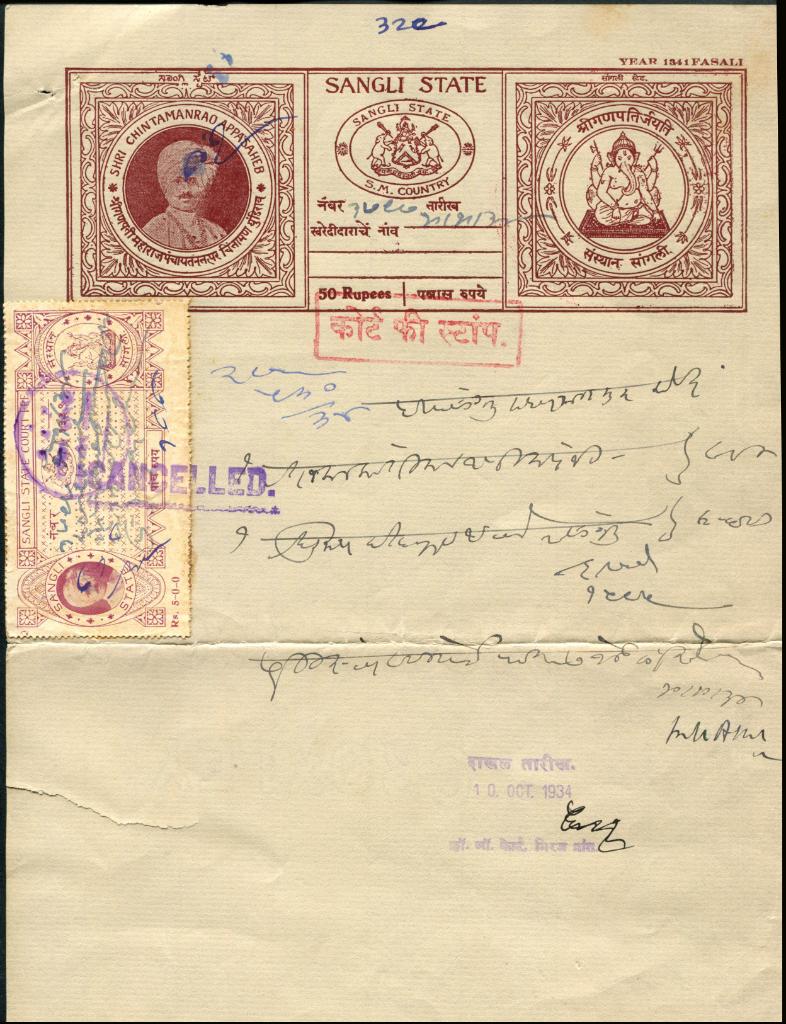stamped paper on:
[Wikipedia]
[Google]
[Amazon]


 Stamped paper is an often- foolscap piece of paper which bears a pre-printed
Stamped paper is an often- foolscap piece of paper which bears a pre-printed
Bangladesh Govt to Amend Stamp Law to Boost Revenue
Retrieved 12 December 2010
Archived here
/ref>
Embossed revenue stamp paper
Essays based on the Wyon head intended for stamped paper submitted after 1839 by Charles Whiting
Philatelic terminology Revenue stamps Spanish inventions


 Stamped paper is an often- foolscap piece of paper which bears a pre-printed
Stamped paper is an often- foolscap piece of paper which bears a pre-printed revenue stamp
A revenue stamp, tax stamp, duty stamp or fiscal stamp is a (usually) adhesive label used to designate collected taxes or fees on documents, tobacco, alcoholic drinks, drugs and medicines, playing cards, hunting licenses, firearm registration, ...
. Mackay, James. ''Philatelic Terms Illustrated''. 4th edition. London: Stanley Gibbons, 2003, p. 147. Stamped papers are not a form of postal stationery
A piece of postal stationery is a stationery item, such as a stamped envelope, letter sheet, postal card, lettercard, aerogram or wrapper, with an imprinted stamp or inscription indicating that a specific rate of postage or related serv ...
.
The use of stamped paper in the American colonies was so unpopular that it has been credited with sowing the seeds of the American Revolution
The American Revolution was an ideological and political revolution that occurred in British America between 1765 and 1791. The Americans in the Thirteen Colonies formed independent states that defeated the British in the American Revoluti ...
.
Uses
The stamped paper has been widely used around the world to collect taxes on documents requiring stampings, such as leases, agreements, receipts, court documents and many others. The papers are bought blank apart from the pre-printed stamp and are available from stationers, lawyers' offices, post offices and courts according to local regulations. The parties to the matter then write their legal business on the paper and lodge it with the court or other interested party. This is an efficient way of collecting taxes and stamping documents without the need to submit them to a separate government stamp office.History
Stamped paper is thought to have been a Spanish invention, being introduced (or reinvented) in theNetherlands
)
, anthem = ( en, "William of Nassau")
, image_map =
, map_caption =
, subdivision_type = Sovereign state
, subdivision_name = Kingdom of the Netherlands
, established_title = Before independence
, established_date = Spanish Netherl ...
in the 1620s. Dagnall, H. (1994) ''Creating a Good Impression: three hundred years of The Stamp Office and stamp duties.'' London: HMSO, p. 3. It has been used widely in France (from 1651), Great Britain (from 1694), the United States, India and elsewhere.
The 1765 Stamp Act required all British colonies in the New World to use stamped paper prepared in London and embossed with a revenue stamp. This led to riots and political agitation which have been credited with sowing the seeds of the American Revolution.
Collecting
Collecting stamped paper is part of revenue philately.Security measures
The stamp sometimes occupies the entire width of the top part of the paper and is often of an intricate engraved design to enhance security. The paper will also frequently have a whole pagewatermark
A watermark is an identifying image or pattern in paper that appears as various shades of lightness/darkness when viewed by transmitted light (or when viewed by reflected light, atop a dark background), caused by thickness or density variations ...
for the same reason.
Current uses
Stamped papers remain in use in many countries; however, electronic versions are being developed to reduce the risk of fraud. This has particularly been the case in India following a large-scale fraud in the year 2000. The use of stamped paper remains an important source of revenue in some developing countries, likeBangladesh
Bangladesh (}, ), officially the People's Republic of Bangladesh, is a country in South Asia. It is the eighth-most populous country in the world, with a population exceeding 165 million people in an area of . Bangladesh is among the mos ...
, where other forms of taxation are hard to collect.Retrieved 12 December 2010
Archived here
/ref>
See also
*Abdul Karim Telgi
Abdul Karim Telgi (1961-2017) was a convicted Indian counterfeiter. He earned money by printing counterfeit stamp paper in India.
Early life
Telgi's mother was Shariefabee Ladsaab Telgi, and his father was an employee of Indian Railways. His ...
, an Indian stamped paper counterfeiter
References
Further reading
* Castenholz, Bill. ''Field Guide to Revenue Stamped Paper'', Castenholz and Sons, Publishers, Pacific Palisades, California, United States. * Einstein, Joseph; Thomas C. Kingsley and W. Richard DeKay. ''Handbook for United States Revenue Stamped Paper'', American Revenue Association, Inc., United States. * Koeppel, Adolph. ''The Stamps that Caused the American Revolution, the stamps of the 1765 British Stamp Act for America'', American Revolution Bicentennial Commission, New York, 1976.External links
{{External links, date=March 2017Embossed revenue stamp paper
Essays based on the Wyon head intended for stamped paper submitted after 1839 by Charles Whiting
Philatelic terminology Revenue stamps Spanish inventions